1960s Culture
Will Society End Up like Aldous Huxley’s Science Fiction Novel?
I was resistant to the western canon of literature as a youth. Much of it was required reading in school. But, because I was a rebel or had a general non-interest in reading, it escaped me. What a difference few decades make! A voraciuos reader now, I find books like Aldous Huxley’s science fiction novel Brave New World, fascinating!
This futuristic (cautionary) tale of a dystopian (or) utopian society, depending on your perspective, is prophetic in many ways. There can be an argument made for both sides. The book describes a world free of war, disease, violence, grief, mental disease, alcohol and drug addiction. 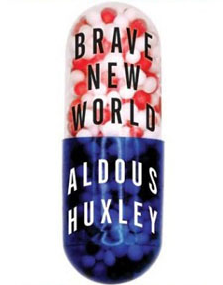 The trade-off is a genetically produced society without monogamous love, family, spiritualism or individual freedoms. Ambition and creativity are frowned upon and extinguished. No personal identity (really) as you are born into a pre-destined class system to do your life’s work. Sometimes you cant help but think, this smacks of Marxism!
The trade-off is a genetically produced society without monogamous love, family, spiritualism or individual freedoms. Ambition and creativity are frowned upon and extinguished. No personal identity (really) as you are born into a pre-destined class system to do your life’s work. Sometimes you cant help but think, this smacks of Marxism!
Discovering Huxley
I sort of backed into reading Brave New World through my research and development on origins and history of the counterculture movement. Huxley has been called the “spiritual father” of the hippie movement. Aldous Huxley’s science fiction novel was published in 1932, but he wrote another one in 1954 which became essential reading for the 60’s counterculture movement.
It is titled “The Doors of Perception”. (Can you guess which rock band got their name from that?) It chronicled Huxley’s 1953 experience on the “psychedelic” natural substance mescaline. He would continue ingesting psychedelics (including LSD) all the way up to his death November 22, 1963 (same day and 3 hrs after The John F. Kennedy assassination).
A Prophetic Novel
Purchasing the novel today, you will receive both “Brave New World” (1932) and “Brave New World Revisited”(1958). The latter touching on his views, reflections and prophecies of the original novel. Many times he makes heavily biased critiques & comparisons to “1984” by George Orwell (one of his colleagues). World overpopulation, drugs, advertising, politics, dictators, brainwashing and other very controversial topics are discussed and how they will affect the future of mankind. Words of warning from his view in 1958.
Brave New World encourages us to keep a close check on our individual freedoms, autonomy and free will. Make sure we are in control of them. Although this tale is melodramatic and an almost unbelievable fantasy, it unveils the bleak side of World Control (and/or) dictatorship versus democracy and freedoms we take for granted daily. Would it be enough to spark the idealists, poets and artists of the early 60’s to drop out and try a sustainable society of their own? Yes, I think Aldous Huxley’s science fiction and other potent literature, music and art of the period had a great influence on what became the counterculture.
Will Society End Up Like a Brave New World?
Many people you query will say, it’s already here! I’ve heard it. Well, I think thats a nice sentiment (if not an exaggeration) on their part. Even though (since Brave New World) we have discovered cloning and test tube babies, it is doubtful things will ever reach the scale and magnitude of the fictional World State’s Hatchery and Conditioning Centre. A baby factory where new borns are brought up with no family ties or values and conditioned by state behaviorist technicians. After thorough brainwashing as youths, they’re integrated into predestined jobs and class system. It’s not in harmony with what I call “The Way of the World” or Natures Way.
It is a very humbling experience being human. Part of that is because we make mistakes and (hopefully) learn from them. How is one to learn and experience life if everything were perfect? And is that life worth living? It paints a bland, gray and uneventful existence to me. Aldous Huxley’s science fiction novel comes off dystopian, evil and corrupt but the society of a Brave New World will never know. They weren’t condtioned that way, so it’s utopia to them.
Important Links You May Enjoy:
Brave New World: A Masterful Critique of Hippy Dreams and Scientistic Hubris
Original Psychedelic Rock Poster Artists Painting Their Environment
Continuing on with my previous post on original psychedelic rock poster artists, we might ponder where the inspiration for such inventive, bold, brilliant works of art would come from. Many might say from the hallucinogens that were ingested at the time. And that would be the easy answer. But, if you examine the lives of these original psychedelic rock poster artists you will find deep-seated roots in art dating back to their childhood.
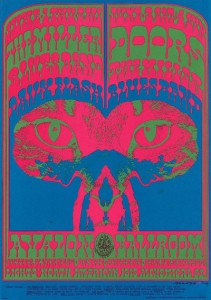
It’s not to say that the popular drugs of the day didn’t have influence in their work (the artists will tell you they did). However, drugs did not make them the brilliant artists they were (or are). You can uncover (actually in many pages of this blog) that the artists came from many backgrounds. Some cartoonists, some musicians, some with minimal accreditation and some with high honors in art instruction. With the innate talent they were born with, these original psychedelic rock poster artists were destined to be artists in one form or another.
In the 1960s it was an open playing field. The new generation wanted to rewrite almost every thing that had been the status quo. This meant not only to be an activist in art, music, literature, film and fashion–but important social and political issues of the day, as well. The germination of these new ideals would come to young minds through literature and discovering the world at large.
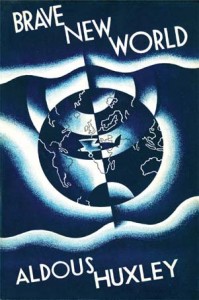 Personally, I believe books like Brave New World by Aldous Huxley were very potent. Bringing an ominous concept of a capitalist world in which people are genetically designed to be passive and useful to the ruling class. Concepts such as family, freedom, love, and culture are considered grotesque. Enough to start a fire? Considering the state of affairs of our country in the 1960s, maybe so.
Personally, I believe books like Brave New World by Aldous Huxley were very potent. Bringing an ominous concept of a capitalist world in which people are genetically designed to be passive and useful to the ruling class. Concepts such as family, freedom, love, and culture are considered grotesque. Enough to start a fire? Considering the state of affairs of our country in the 1960s, maybe so.
After all the author was an extraordinary man who brought to his work a strong sense of the world into which he was born. There were many adorned relations in his bloodline. Including, his grandfather (Thomas Huxley) who helped Darwin realize his theory of evolution. So, even though this is a science fiction/dystopian novel, its ideals come from a credible & worldly source.
It is interesting that psychedelic art and surrealist art are similar in the fact that they both prescribe a mechanism for obtaining inspiration. One relies on the observance of dreams and the other on hallucinogens. Both tied to important developments in science, Freud’s theories of the unconscious and the discovery of LSD. The original psychedelic rock poster artists and their community were expanding their minds, their art, their freedoms and color the world unlike the stagnant black-and-white 50s. This would cause the so called Generation Gap and the youth of the country were ready to embrace it.
60s Psychedelic Poster Artists Illuminate A Decade
To explore famous rock posters in detail you may have a hard time separating them from the works of the 60s psychedelic poster artists. There are many reasons for this.
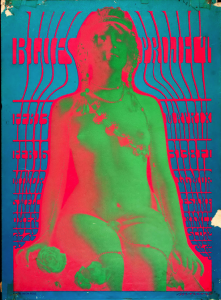
The “rock” poster was invented to advertise events both musical and social that were growing larger and larger in the San Francisco area. The seeds of the counterculture (or hippie movement) were coming of age. This movement was bound to remove itself from the ideals and rigidness of the 1950s. Creating a new culture, with its own ideals, experiences, music, fashion and sustainability.
The 60s psychedelic poster artists were very much a part of this experimentation. The three martini lunch was out! LSD and marijuana would take its place in the new counterculture. It was as much a rebellion as it was a mind expanding new frontier.
What was black-and-white in the 1950s was now bright and vibrant colors in the 1960s. The light switch had been turned on. Experimentation in all types of media would push the limits of good taste in order to be different or original. But then, bad taste could be good taste in these newfound freedoms of expression.
Whatever the case, there was much art being created around this time. Some hang in museums and some were swept away as trash. I’m speaking particularly about rock posters and handbills made usually for concerts at ballrooms and auditoriums.
The music drove the 60s psychedelic poster artists to aspire to what they did. Mostly commissioned to do concerts rock concerts, but, many would create the posters and put the shows on themselves. A good example of that would be the Pinnacle Rock Concerts that were put on in LA. (See Pinnacle Concerts posts on this site)
Although we concentrate mainly on the art, artists and famous rock posters of the 1960s–many great changes in our country were made because of the ideals and grasp for a better world from the counterculture.
Links of Interest:
How San Francisco Band Blue Cheer makes it in Los Angeles
I am extending my conversation about San Francisco band Blue Cheer. It seems they were very much the residents at the corner of Haight-Ashbury in San Francisco. (This was at the height of Hippiedom in the mid 1960’s). It is very interesting to me how the Pinnacle Rock Concerts (based in LA) seemed to really bolster their career. San Francisco was a very fertile ground for up and coming musical artists. Many like The Grateful Dead, Jefferson Airplane, Big Brother and the Holding Company made their bones right there in San Francisco.
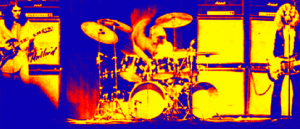 The counterculture movement was happening everywhere. It was happening in San Francisco as well as Los Angeles, New York and all the world. However (California in particular), the scene in Los Angeles (music as well) was much different than Frisco. It is interesting to me to explore why San Francisco band Blue Cheer would be so wildly popular in LA.
The counterculture movement was happening everywhere. It was happening in San Francisco as well as Los Angeles, New York and all the world. However (California in particular), the scene in Los Angeles (music as well) was much different than Frisco. It is interesting to me to explore why San Francisco band Blue Cheer would be so wildly popular in LA.
In my opinion it could be that many bands in San Francisco derived mainly from folk music roots. I know this to be true of groups like the Mamas and the Papas, Jefferson Airplane, Crosby stills and Nash and Quicksilver Messenger Service. Many of these mentioned were influenced by Fred Neil and the coffeehouses and the “beat” movement in Greenwich Village New York in the late 1950’s.
They were followers of the folk movement and turned it electric after many of them moved to California. Case in point: David Crosby wanted to call his group (before CSN) “The Sons Of Neil”. Thats how deep seeded the “folk” connection was. More on this in another post.
Los Angeles artists included The Doors, The Seeds, Frank Zappa & The Mothers of Invention, Capt. Beefheart and Love. Not really the “trippy” kind of music coming out of S.F. Although some of LA bands could be considered crossover folk acts they didn’t rely on those roots. It seems (to this author) it was much more electric blues oriented than folk music. For a San Francisco band Blue Cheer made a huge splash in Los Angeles. This music being created in LA was much more more electric, harder edged, and heavier.
As we mentioned in the previous post, Blue Cheer was wildly popular and accepted in Los Angeles. I am trying to determine if this is how they captured national attention. It is odd to me they landed a spot on Dick Clarks-American Bandstand…pretty commercial stuff.
But, you must remember their 1st Album was a huge success, peaked at number 11 on Billboard and still sells to this day. They certainly had strong management (see Eric Albronda comments), promotion and support in LA. I think I lean toward the opinion of our friends at Rock Prosopography 101
Blue Cheer had cachet insofar as they came from San Francisco, but their music was pretty far from the sinuous folk rock improvisations typical of the Fillmore. The San Francisco band Blue Cheer was a loud, loud, loud and proud power trio, playing through veritable wall of Marshall Stax amps.
I may be getting closer to some fire on this. I just stumbled across a list of gigs for Blue Cheer in chronological order (a real labor of love by Bruno Ceriotti). This is unbelievable! What I learned was the many transformations (every few months!) of this group. Five incarnations from 1966 until July 16, 1967 which evolved the power trio Dickie Peterson, Leigh Stephens and Paul Whaley. They would play non stop until September 1968 promoting the albums “Vincebus Eruptum” & “Outside Inside”. Line up #6 would soon take over.
After this research, its not hard to imagine how San Francisco band Blue Cheer made it in LosAngeles. Maybe a fish out of water. A little more extreme…a little more experimental…a little more Blue Cheer!
Links of Interest:
Whose a Better Guy Than Wavy Gravy?
The answer to the question is… not many! If you’ve seen the movie “Saint Misbehavin’: the Wavy Gravy Movie”– you know what I mean. Wavy Gravy (Hugh Romney) is an activist and defender of peace, basic human needs and humanitarian causes. He spread the word around the world in a group called The Hog Farm dressed as a juggler, a clown in a caravan of psychedelic painted buses in the 1960s.
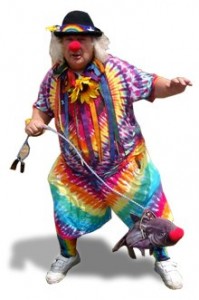
As a matter of fact he wrote the song called “Basic Human Needs” (the existence of certain universal needs that must be satisfied if people are to prevent or resolve destructive conflicts – International Journal Of Peace). Wavy Gravy was always an apostle of peace and love and still is to this day. He also works very hard at it. Wavy says, “some people tell me I’m a saint, I tell them I am a saint misbehavin’”.
Hugh Romney (Wavy Gravy) was born in East Greenbush, New York and grew up in Princeton New Jersey. He would take walks with Albert Einstein, be roommates with Bob Dylan (while writing A Hard Rains Gonna Fall) and become a beat poet in Greenwich Village. He became the poetry director at the Gaslight Café (New York City) and was instrumental in introducing jazz and poetry there. He was so popular he began opening up for acts such as John Coletrane, Thelonious Monk, Peter, Paul, and Mary plus many others.
At some point Wavy becomes part of an improvisational group from San Francisco called “The Committee”. He and his wife Bonnie Jean are living outside of Los Angeles in 1965 when a neighbor (recovering from a stroke) offered a mountaintop spread rent-free in exchange for slopping the hogs. Thus was born The Hog Farm commune and will be Wavy Gravy’s headquarters for everything else to come. There would be many humanitarian bus tours, tours with Ken Kesey & the Merry Pranksters, also an MC and member of the support crew “The Please Force” at Woodstock along with The Hog Farm.
All in all, the movie covers his life and work pretty thoroughly (including iconic friends and colleagues from the 1960s). I came away feeling that this was a very good man and serious about making the world a more happy, safe and peaceful place to be in. It is also a history lesson about how the 60s really did change the world and we feel it still today.
The scope of his goodness is much more than can be covered in this post. If you’ve never heard of Wavy Gravy or are interested in learning more, it will be well worth your time to see what’s behind this cosmic clown and all that he’s done. Pretty fascinating.
Who is Rock Concert Artist Victor Moscoso?

Rock Concert Artist
Does that title bring to mind a guy with formal academic training @ Cooper Union, NY – Yale – SF Art Institute and taught there as well? Meet rock concert artist Victor Moscoso. We’ll wax endearingly about all of the classic -golden era rock concert poster artists (Wes Wilson, Stanley “Mouse”, Alton Kelley, Rick Griffin and more) but, Moscoso was the exception to the rule.
It does not come down to a matter of style or who’s the better artist or possibly who had more experience – that is all relative to the viewers style and taste. We are talking strictly about formal education in art. Now, this was a good thing and a bad thing as it turned out. According to him -the structure and rules of his formal art education had to be torn down and rewired in order to experience the freedom he needed to excel in poster art. Wow! Artist sacrifices for his art, yet again.
This is amazing to me. I have been an admirer of cartoonist, artist, teacher and rock concert artist Victor Moscoso for many, many, years. Now, to discover the struggle and reversing of academic knowledge just to do rock concert posters…sounds pretty incredible now. But really, it goes perfect with the 1960s mentality. Being experimental, being free, and liberating (I think were his words) were the direction & expression of art, music, and the counter culture itself. I’ll give you a couple of quotes here that I feel are relevant and capture the essence of this era and comment on fine art vs. commercial art.
“The 1960s were where fine art and commercial art met. It was a great time, it meant breaking all the rules” – Stanley Mouse
“It’s all commercial: The Sistine Chapel is a commercial illustration for the Catholic Church.” – Victor Moscoso

According to my research – he began the poster art as a resident of Haight Street (of the legendary “Hippie” Haight-Ashbury intersection) somewhere in 1966. He said “It was cheap and the neighbor hood just kinda sprang up-we had no idea we were “cutting edge” at the time. From this quote I get the feeling that Mr. Moscoso was one first to make it on the scene and producing rock concert posters for Chet Helms and Avalon Ballroom
…
(We will actually get into the origin and evolvement of psychedelic poster art in another post)
Growing up in Brooklyn comes with street smarts and Victor was no exception to the rule. After much training and school…”On The Road” – Jack Kerouac was published in 1959 he was compelled to move west to California.
Well that is a brief introduction to our featured rock concert artist Victor Moscoso. Next up: more about his history, artistic heritage, accolades and what made his rock posters stand out from the rest.